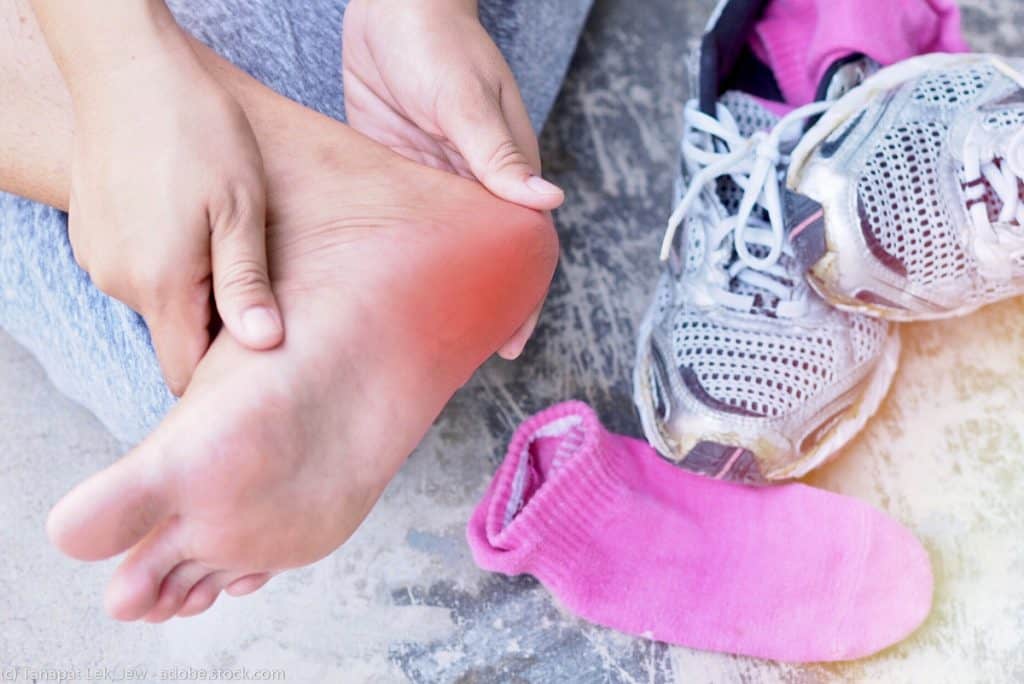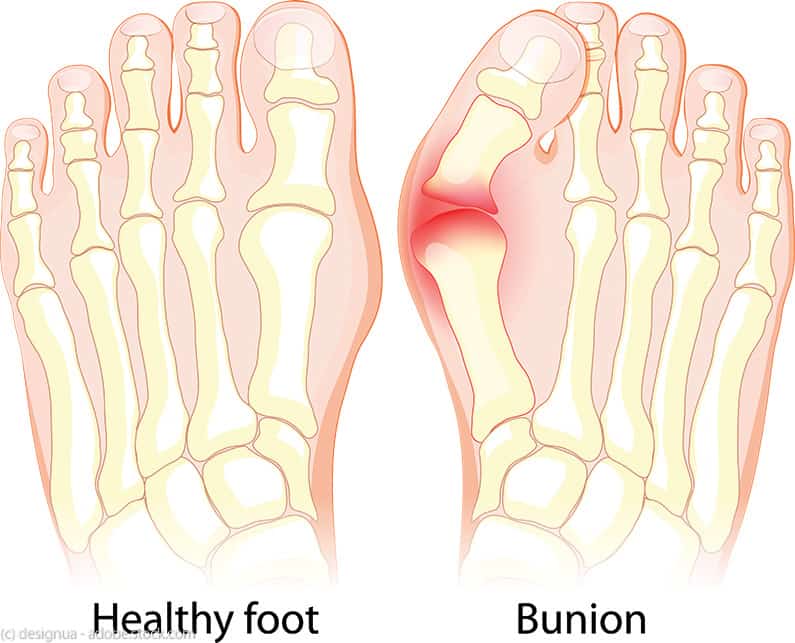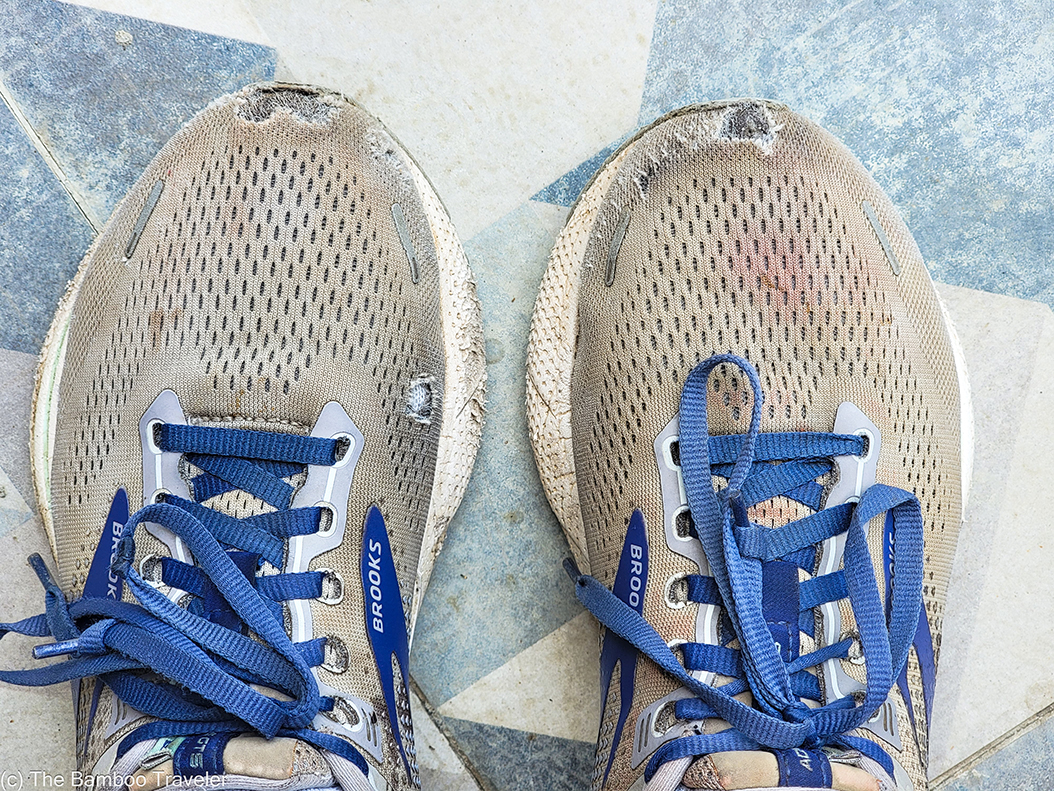Best Travel Shoes for Bunions and Plantar Fasciitis
If you’ve ever had plantar fasciitis or bunions, then you know how painful it can be to stand for long periods of time and walk for even one block. You also know how hard it is to find good shoes for plantar fasciitis and even harder it is to find good shoes for bunions.
I have both problems. I thought for sure I would not be able to travel again without foot surgery. However, I found the perfect shoes for my plantar fasciitis AND my bunions. In this post, I’m going to share with you the shoes that have allowed me to travel full-time around the world pain-free for the past two years.
Plus! When I was a classroom teacher, these shoes allowed me to stand for long periods of time.
Disclosure: This post may contain affiliate links. As an Amazon Associate and a Bookshop.org Associate, I earn from qualifying purchases. Please see this website's Disclosure for more info.
PRO TIP: No one likes to think about insurance, but accidents do happen. I highly recommend getting travel insurance. During my travels over the past 2 years, I've been using SafetyWing for my insurance. They're very affordable for all ages, and digital nomads can use their insurance long-term.
What are Bunions?
A Bunion is a foot condition whereby the bone or tissue at the bottom of your big toe moves out of place. As a result, a lump appears on the side of your big toe. It then rubs against your shoe.
Bunions can be excruciatingly painful and cause lots of problems like blisters (me!) and arthritis.
Ideally, you should avoid wearing high heels and shoes that are too narrow and too small.
Generally, people with bunions, have wider feet, so try to find shoe sizes that are specifically wide or extra-wide (Prevention).
- Toe Box: The toe box should be wide so that your toes save a lot of space to move around
- Material: The shoes should be made out of soft leather and fabric
- Cushioning: Make sure the foot area has good cushioning
- Support: They should have good arch support
More Health Tips When Traveling Overseas:
What is plantar fasciitis?
Plantar fasciitis is a foot condition in which the tissue that connects the heel to the toe bones becomes inflamed. Plantar means sole of the foot and fascia means tissue that connects bones.
You can get this condition from wearing the wrong shoes, putting too much weight on your feet, and genetics.
People who do a lot of traveling can get plantar fasciitis easily from carrying a heavy backpack or camera gear and wearing bad shoes like flip-flops or poor-quality sneakers.
According to Orthofeet, for plantar fasciitis, you need shoes with good support and lots of cushioning.
- Heel: There should be a high heel-to-toe drop in order to reduce the stress on the plantar fasciitis.
- Sole: The sole should be thick and rigid.
- Toe Box: The toe box should be wide and roomy enough for your toes. You don’t want anything too narrow in the toe area.
- Cushioning: There should be lots of cushioning so that when your feet make contact with the ground, the shoes absorb the impact.
- Arch support: The shoes should have good arch and heel support in order to reduce overpronation.
- Flexibility: The front part of the shoe (where the toes are) shouldn’t be too stiff. You should be able to bend the shoe at the ball of the foot. However, the back of the shoe should be more rigid and not bend so much.
Best Shoes for Bunions & Plantar Fasciitis
My absolute favorite pair of shoes for travel are the Brooks Adrenaline GTS 22 (2022) or Brooks Adrenaline GTS 23 (2023) wide or extra wide.
I love these shoes!
Brooks Adrenaline GTS shoes are PERFECT for those with bunions because…
- They come in wide and extra-wide sizes to give your bunion lots of room
- The toe box is nice and roomy to give your toes room to roam around
- The material is nice and soft
- They have nice cushioning in the foot area
- Good arch support
They’re also PERFECT for those with plantar fasciitis because…
- They’ve got a high heel-to-toe drop
- Great arch support and cushioning
- When the foot hits the ground, the shoes absorb the impact.
- The front part is roomy and flexible
- The sole is thick and rigid.
- They have a good heel-to-toe drop
My experience wearing Brooks Adrenaline for travel
I do a lot of traveling.
In fact, I’ve been traveling full-time in Mexico, Central America, and South America since April 2021.
When I travel, I pack only 2 pairs of shoes: a pair of cheap flip-flops and my Brooks Adrenaline GTS.
I wear flip-flops around my hotel room or Airbnb or to the beach. However, for all other times, I wear my Brooks Adrenalines. That means I wear my Brooks shoes 340 out of 365 days a year.
These (above photo) are my ugly feet with my ugly bunions.
Are they painful?
Never.
(Knock on wood!)
I can walk with my ugly bunions and my dreadful plantar fasciitis in my Brooks Adrenaline shoe all day and not feel a thing.
No rubbing against my bunions.
No burning sensation on the bottom of my feet.
And I walk a lot–10,000 to 20,000 steps a day on concrete and cobble-stoned streets. I don’t have a car, so I get around by walking or taking the bus.
On top of the walking, I’m also carrying a purse and a backpack filled with heavy camera gear.
Plus, I weigh…too much.
Along with my bunions and plantar fasciitis, I have arthritis and a meniscus tear in my knee.
Some minor problems with Brooks Adrenaline shoes
Due to my bunions, there’s one minor issue that I’ve run into with Brooks Adrenaline shoes.
After 6 months of wearing every pair of my wide-size Brooks, the bunion on my left foot would create a hole in the fabric of my left shoe (never the right bunion), so I’d have to buy new shoes twice a year.
In 2022, I went with extra-wide Brooks shoes, and it took a year before the bunion made a hole in my shoe.
The above photo is of my current Brooks Adrenaline shoes (purchased in June 2022) after a year of wearing them for 2 months in Costa Rica, 6 months in Mexico, 2 months in Panama, and 3 months in Ecuador. You can see the hole in the shoes on the left. They’re not in the best shape.
If you have bunions, you might find yourself needing to replace your shoes every 6 to 12 months. However, you probably have more shoes than I do, so you might not face this problem as often as I do.
The other issue with Brooks shoes is that if you need wide or extra-wide shoes, you don’t have many choices for color.
BEST SHOES FOR PLANTAR FASCIITIS – ON CLOUDFLYER RUNNING SHOES
The best shoes for plantar fasciitis are the On Cloudflyer Running Shoes.
I love these shoes.
They are not only super comfy, but they’re also very stylish.
The shoes are made by a Swiss company called On.
Why I love my Cloudflyers
I don’t wear my Cloudflyers for travel. However, they were perfect for me while I was teaching or doing errands.
1. Good for standing for long periods of time
When I was a teacher, I wore my Cloudflyers nearly every day to work. I could stand for long periods of time without feeling any pain under my foot or in my bunions.
2. Cloudflyers are stylish
My shoes are black, so I can get away with wearing them to work with a black or grey skirt and black tights and even black or grey dress pants.
3. Shoelaces
There’s also something about the shoelaces. When I lace up my shoes, my feet feel so stable like they’re being enclosed in a little cocoon.
4. Great arch support and cushioning
They have a high heel-to-toe drop, great arch support, and beautiful cushioning. When my foot hits the ground, the shoe absorbs the impact, which puts less stress on my meniscus-torn right knee, leading me to put less pressure on my plantar fasciitis-left foot.
5. Super lightweight
They’re also excellent travel shoes for those with plantar fasciitis and knee problems. They’re super lightweight, so you’re less likely to experience fatigue when out walking all day.
Feet can get tired, and when they do, they can tire out your knees. When a bad knee like my right knee gets tired, I put more pressure on my right leg, causing my plantar fasciitis to flare up.
Why Cloudflyers are not so good for people with bunions
Cloudflyers don’t come in wide or extra wide sizes. As a result, your bunions are more likely to rub against the shoe.
I can wear these in the classroom but I can’t go for long walks with them.
Essentials for Bunions & Plantar Fasciitis
Here are some more things I use for my bunions and plantar fasciitis.
Orthotics
Along with buying shoes with a lot of cushion, another essential item to get for your trip is a pair of orthotics (also called insoles) to go inside the shoes.
They come in different sizes and arch heights. Just ask the salesperson about which kind they recommend. I got the ones with the most support.
I have Superfeet orthotic insoles and I am quite happy with them.
I got one pair and I just move them to whatever shoe I am wearing.
Compression Socks
Another essential item for plantar fasciitis is a pair of compression socks. They reduce inflammation in your feet, increase circulation thereby reducing fatigue, and give extra cushioning.
I just love them for how they feel—a bit like I’m getting a massage.
These compression socks from Sockwell are the ones that I bought and I’ve been very happy with them. I bought a medium/large size for my 8 and 8.5 size feet.
Unfortunately, they are unavailable. However, Sockwell has 2 other styles of compression socks for plantar fasciitis and 1 style for bunions.
Foot Massager
A foot massager is not one of those things most people pack when they travel. However, if you have plantar fasciitis, it can be a life safer. I pack a foot massage ball, and using it after a long day of walking has been heaven on my feet. I think it helps my plantar fasciitis a lot.Final Thoughts
If you’re looking for a really good pair of shoes for your bunions and/or plantar fasciitis, then you can’t go wrong with either the Brooks Adrenaline GTS23 or the Brooks Adrenaline GTS 22. What I most love about these shoes is the wide and flexible toe box.
If you only have plantar fasciitis, then the On Cloudflyers would also work well. What I adore about the Cloudflyers is that they come in a really slick and stylish black color which makes them suitable for semi-casual workplaces. I can easily get away with wearing them with black or grey pants or a black skirt and tights.
One of the best important things to do to prevent getting sick or injured when you travel is to have a good pair of shoes. Don’t do like me and end up in the emergency room of a Japanese hospital.
Are you on Pinterest?
Hey! How about saving one of these pins to Pinterest to read for later?
And feel free to follow me on Pinterest, where you'll find lots of travel articles for everywhere around the world.
SAFETY TIPS: Don't travel anywhere without bringing these essential items with you to keep you safe and secure:
Combination lock - You MUST bring a combination lock with you if you're staying in hostels. Hostels provide lockers and you provide the lock.
Money belt - Even though these are not the most comfortable things to wear, a money belt is essential. I've tried both these traditional travel belts and ones that runners use.
Anti-Theft Purse - Travel-on Anti-theft purses are great because they're made of a material that's difficult for thieves to slash. They've got lots of pockets as well and a way to lock the zippers.


















0 Comments